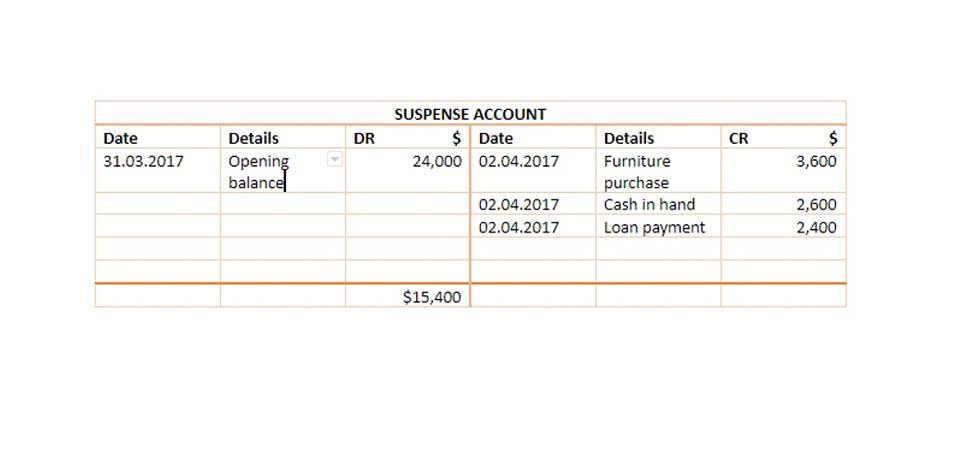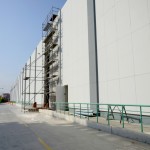
Enron is perhaps the most well-known auditing scandal – and all three of these risks show up in the Enron scandal. Enron was regularly audited by what was perhaps the most respected auditing organization in the world, but it was still able to misreport figures and ended up losing money for hundreds of thousands of people. Audit risk (also known as residual risk) refers to the danger or risks that an auditor may issue an unqualified report, due to the auditor’s failure to detect material misstatement, either due to error or fraud. Audit Risk Model is a tool that is used by the auditors in order to understand the relationship between various risks that exist during the normal course of the audit process.
The Human Element in Audits
At this juncture, auditors embark on a journey to pinpoint and appraise risks capable of skewing the reliability and accuracy of financial statements. This proactive identification and evaluation are foundational in developing an audit approach that will address and mitigate these risks effectively. Also, audit risk formula can be in the form of risk of material audit risk model misstatement and detection risk. This is due to the risk of material misstatement is the combination of inherent risk and control risk. For example, if the level of inherent and control risk is low, auditors can make an appropriate judgment that the level of audit risk can be still acceptably low even though the detection risk can be a bit high.
Examples of Detection Risks in Auditing

However, it can really pave way for an even more damaging fraud risk, and therefore, this particular risk needs to be mitigated by companies at all costs. Their examinations act as managerial tools to identify process and internal control improvements. External auditors often review corporate financial statements and internal controls. In either case, auditors are responsible for identifying any errors and inconsistencies. Auditors must navigate these complexities by leveraging their expertise, CPA training, and audit management technology to enhance the collection and analysis of audit evidence.
Audit Risk Model for Planning
Asset-backed securities, such as collateralized debt obligations (CDOs), became difficult to account for as tranches of varying qualities were repackaged again and again. This complexity may make it difficult for an auditor to make the correct opinion, which in turn can lead investors to consider a company to be more financially stable than in actuality. Companies that operate in highly regulated sectors, such as the financial sector, are more likely to have higher inherent risk.

What Factors Can Increase Inherent Risk?

Control risk is the risk that the client’s internal control cannot prevent or detect a material misstatement that occurs on financial statements. It is the second one of audit risk components where auditors usually make an assessment by evaluating the internal control system that the client has in place. As far as Risk of Material Misstatement is concerned, it can be seen that this is the risk that the financial reports contain several material misstatements before the audit process is undertaken. The threshold of materiality in this regard varies from organization to organization. The auditors, as well as the accountants in the company are well aware of the materiality threshold. Therefore, this risk is often higher in the cases where the company does not have sufficient internal controls present.
- In contrast, the assessed levels of inherent and control risk and the acceptable level of detection risk can vary for each account and assertion.
- Audit Risk is the risk that the auditor expresses an inappropriate audit opinion when the financial statements are materially misstated.
- As businesses brace for the future, replete with uncertainties and opportunities, the importance of robust audits cannot be understated.
- Students should refer to any published accounts of large companies and think about the vast number of transactions in a statement of comprehensive income and a statement of financial position.
- The audits were thus being carried out on the wrong numbers and no one knew until it was too late to do anything about it.
- Inherent risk is the natural risk that occurs without any risk management controls.
It identifies potential areas where financial statements might hold significant errors and the factors contributing to these risks. If a company hires an auditing company, the auditor from the external company will use the facts and figures provided by the company. People may misreport data or outright hide evidence of misdeeds from auditors because there were no internal controls to stop them, and the auditor will accept the data, assuming it can from a source of truth. When the audit is completed it will be based on the wrong numbers, which means that the audit itself will be wrong as well. The audit risk model has been designed to help businesses identify the problems that can occur in audits. There are many major accounting-related scandals that highlight the importance of these audits.
However, there are often clear and observable factors to consider, such as the economy, the industry, and previously known misstatements that help the auditor arrive at an assessed level of inherent risk for each audit area. Control risk arises whenever a company’s internal practices don’t prevent any misstatements. https://www.bookstime.com/ Detection risk, on the other hand, occurs when an auditor fails to detect any risks. Inherent risk is any risk that occurs naturally when there is no risk management in place to mitigate it. They can however balance these risks by determining a suitable detection risk to keep the overall audit risk in check.
Detection Risk
- Because creditors, investors, and other stakeholders rely on the financial statements, audit risk may carry legal liability for a certified public accountancy (CPA) firm performing audit work.
- For example, if the risk of material misstatement is high, auditors need to reduce the level of detection risk.
- To lower detection risk, an auditor will take steps to improve audit procedures through targeted audit selections or increased sample sizes.
- Does it concern you that even with proper planning, a fair amount of judgment is involved?
- Risk assessment in auditing is complicated because it entails cataloging potential problems and conducting a dynamic analysis of how these risks interact within the context of the audit engagement.
- The business faces the risk of slow cash flows and so there is a business risk related to the liquidity of Donald Co.
- Familiarity with industry best practices, common risks, and regulations is foundational in creating a tailored audit plan.
Control risk is the likelihood that material misstatements will occur even when controls have been applied. Audit risk refers to the possibility that an auditor may provide an inappropriate opinion on a set of financial statements. The audit planning memorandum is more than a checklist; it’s a living document that evolves as the audit progresses. By following the template laid out in this guide, you set the stage for a rigorous, focused, and successful audit.
For example, if an audit requires a low detection risk to counter a high control risk, auditors may rely less on control testing and conduct extensive substantive procedures to form a valid audit opinion. In order to reduce the complexity of minimizing audit risk, auditors utilize a suite of sophisticated tools designed to enhance the precision and reliability of their work. These tools are not just efficiency enablers; they are crucial in deepening the auditor’s understanding of the financial landscape they navigate, ensuring that no stone is left unturned in the quest to validate financial statements. Also, auditors cannot change or influence inherent risk; hence, the only way to deal with inherent risk is to tick it as high, moderate or low and perform more audit procedures to reduce the level of audit risk.
In this case, auditors will not perform the test of controls as they will go directly to substantive audit procedures. The auditors generally focus on main risk areas, for example, understated costs or overstated revenues, where errors may lead to material misstatements on the financial statements. As businesses scale and operations span continents, the complexity of data to be audited multiplies. Moreover, the introduction of sophisticated technologies means that auditors are no longer only combing through spreadsheets and ledgers.

 Centro Empresarial El Nuevo TRIGAL
Centro Empresarial El Nuevo TRIGAL  proyectos@mmgsa.com
proyectos@mmgsa.com  (+51) 01 273-0641
(+51) 01 273-0641 






